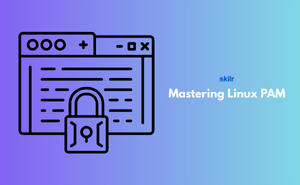👇 CELEBRATE CLOUD SECURITY DAY 👇
00
HOURS
00
MINUTES
00
SECONDS

The Linux PAM framework is a powerful system that controls how users log in and gain access to Linux machines. Instead of relying on just one method of authentication, PAM allows administrators to mix and match multiple methods depending on their organization’s needs. For example, a company can require both a password and fingerprint verification to ensure higher security.
This certification introduces learners to the inner workings of Linux PAM, including how to configure modules, manage authentication policies, and troubleshoot login issues. With this knowledge, candidates become capable of enhancing system security, creating flexible authentication setups, and supporting enterprise-grade access management in Linux systems.
This exam is ideal for:
Domain 1 - Introduction to Linux PAM
Domain 2 - PAM Architecture
Domain 3 - Core PAM Modules
Domain 4 - Configuring PAM
Domain 5 - Advanced Authentication Methods
Domain 6 - Security Management with PAM
Domain 7 - Troubleshooting PAM
Domain 8 - PAM in Enterprise Environments
Industry-endorsed certificates to strengthen your career profile.
Start learning immediately with digital materials, no delays.
Practice until you’re fully confident, at no additional charge.
Study anytime, anywhere, on laptop, tablet, or smartphone.
Courses and practice exams developed by qualified professionals.
Support available round the clock whenever you need help.
Easy-to-follow content with practice exams and assessments.
Join a global community of professionals advancing their skills.
It strengthens login security and prevents unauthorized access.
It’s a framework that controls how users log in and authenticate in Linux.
Linux administration, DevOps, security engineering, and IT operations.
It’s intermediate-level, requiring some Linux knowledge.
Yes, cloud servers also rely on PAM for access management.
Yes, both basic and advanced modules are covered.
It integrates Linux systems with enterprise identity management.
Yes, troubleshooting PAM errors is included.
Yes, PAM supports multi-factor authentication setups.
Yes, it’s crucial for enforcing secure authentication policies.
No, it works on desktops, cloud systems, and enterprise Linux environments.
System administrators, security engineers, and DevOps professionals.
Passwords, biometrics, tokens, LDAP, and more.
It provides flexibility and security in authentication methods.
Yes, basic Linux system knowledge is required.